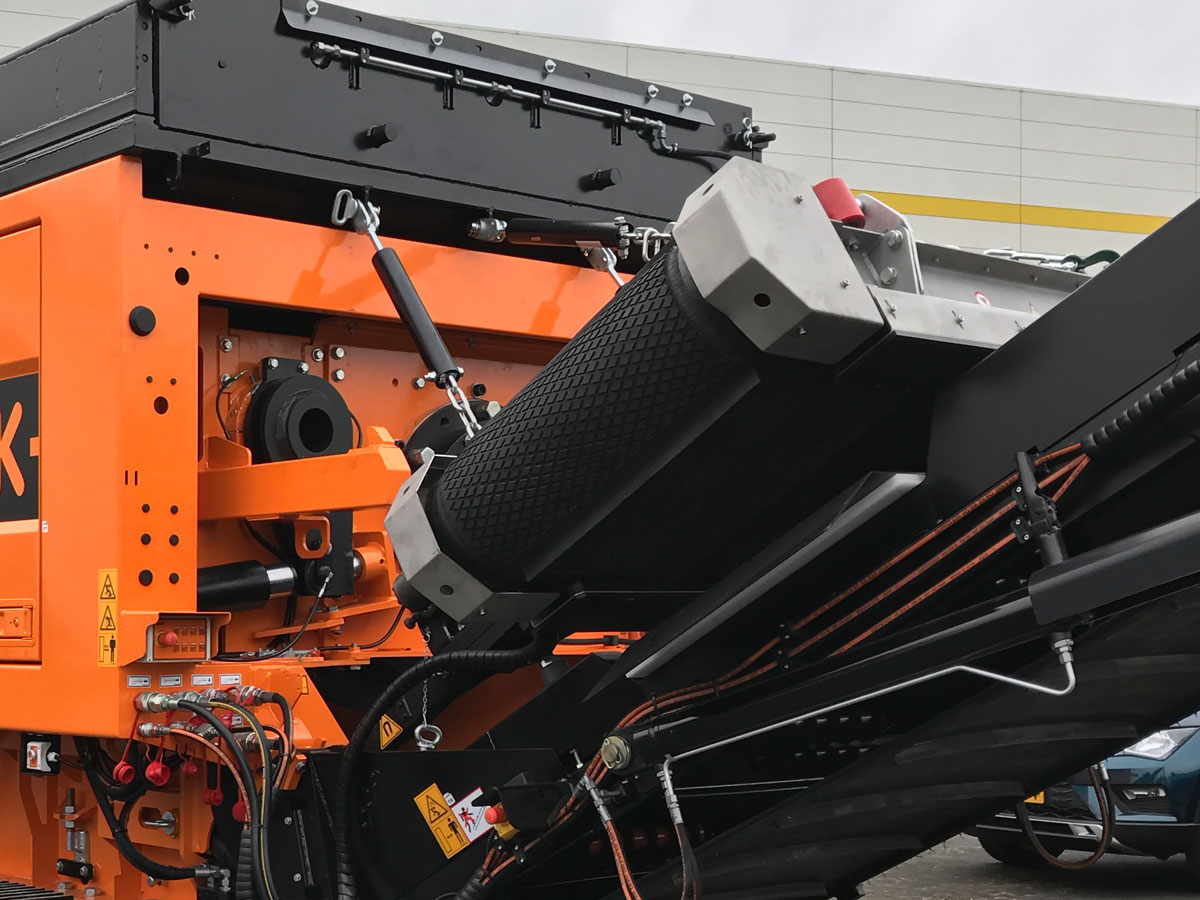Neodymium - overband magnets
Search results
Your results in: pages, products and documents
Scroll to see everything. Didn't find what you were looking for?
Try another search term or contact us.

-
{{filter.Description}}
({{filter.UOMDescription}})








No results found
Your results in: pages, products and documents
Scroll to see everything. Didn't find what you were looking for?
Try another search term or contact us.
Application of neodymium overband magnetic separators
These magnets are often used on mobile shredders or sieves because they are compact and lightweight. The magnetic separators are made of stainless steel so that they do not rust due to weather influences, such as rain. You can choose between electric or hydro motor for the drive roller. The magnet with hydro drive can be integrated to the existing hydraulic system of the mobile installation. So that no additional power supply is required.

Operation of overband magnets
Conveyor belt speed:
to remove ferrous or iron parts from a material flow, they must remain in a magnetic field for between approximately 0.3 and 0.5 seconds, where they are magnetized. To achieve maximum separation, it is important to optimally match the size of the magnet (main pole) and the belt speed. This means that with a narrow overband magnet the conveyor belt beneath it must run at lower capacity (m/s) than with a wider magnet at the same suspension height.
The following formula provides an indication of the maximum conveyor belt speed:
- Maximum conveyor belt speed (b) = block magnet width (a) / 0.3 (sec.)
- Recommended conveyor belt speed (b) = block magnet width (a) / 0.5 (sec.)
.jpg)
Placement of overband magnets
The distance between a magnet and the conveyor belt must be as small as possible. The magnetic force decreases exponentially with increasing distance. There is, however, a minimum distance required so the rubber cleats safely remove all the ferrous parts from the material flow. There are two methods for use/placement of overband magnets: transverse and in-line. Goudsmit has a specific, optimum magnet configuration for both mounting options.
Cross - cross belt magnet
In practice, transverse placement is most common, because it is easier to install in an existing line. An additional advantage is a ferrous discharge to the side, which from the logistical perspective is easier to process.
‘In-line’
If you have the option to place your overband magnet in line with the conveyor belt, this is always preferred. The advantage of this is that the transported material ‘breaks open’ at the end of the belt (head roller) and is therefore suspended in mid-air for several milliseconds. As a result, the magnet can easily pull the ferrous metal out of the product flow.

Non-magnetic zone
When positioning the magnet, the construction below the magnet such as the frame, bearing rollers and end rollers must be made of non-magnetic material. This is because steel parts are magnetized. This adversely affects the separation performance of the overband magnetic separator. For more information about this: see non-magnetic zone.
.png)

Neodymium overband magnets deliver high performance in a compact, lightweight design. The Tri-pole magnet with an auxiliary pole enhances separation and drop-off efficiency of ferromagnetic parts. Stainless steel covers minimize maintenance, while central greasing points simplify servicing. Built with premium components, they ensure maximum efficiency and durability. Optional single-sided mounting allows for flexible installation.